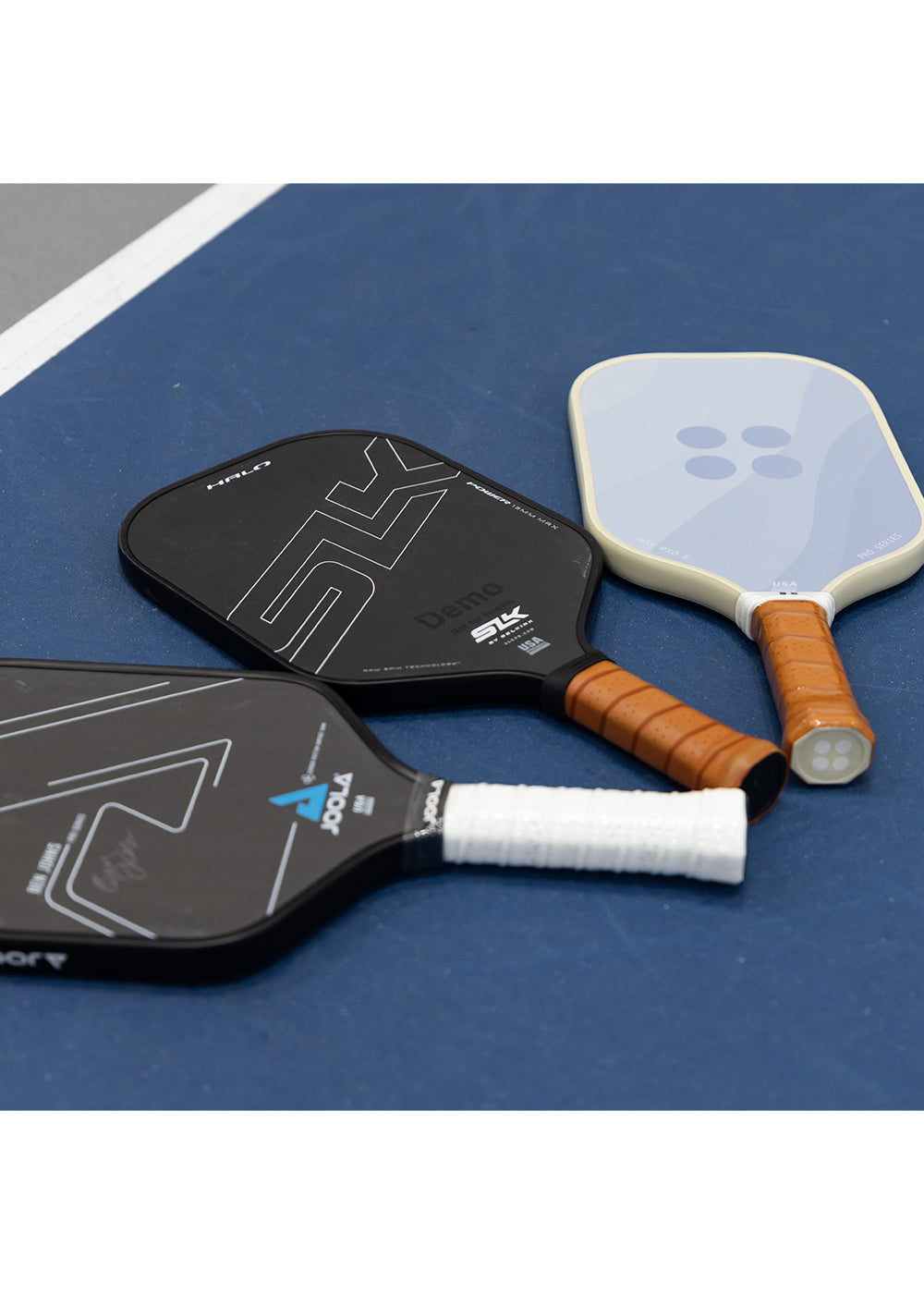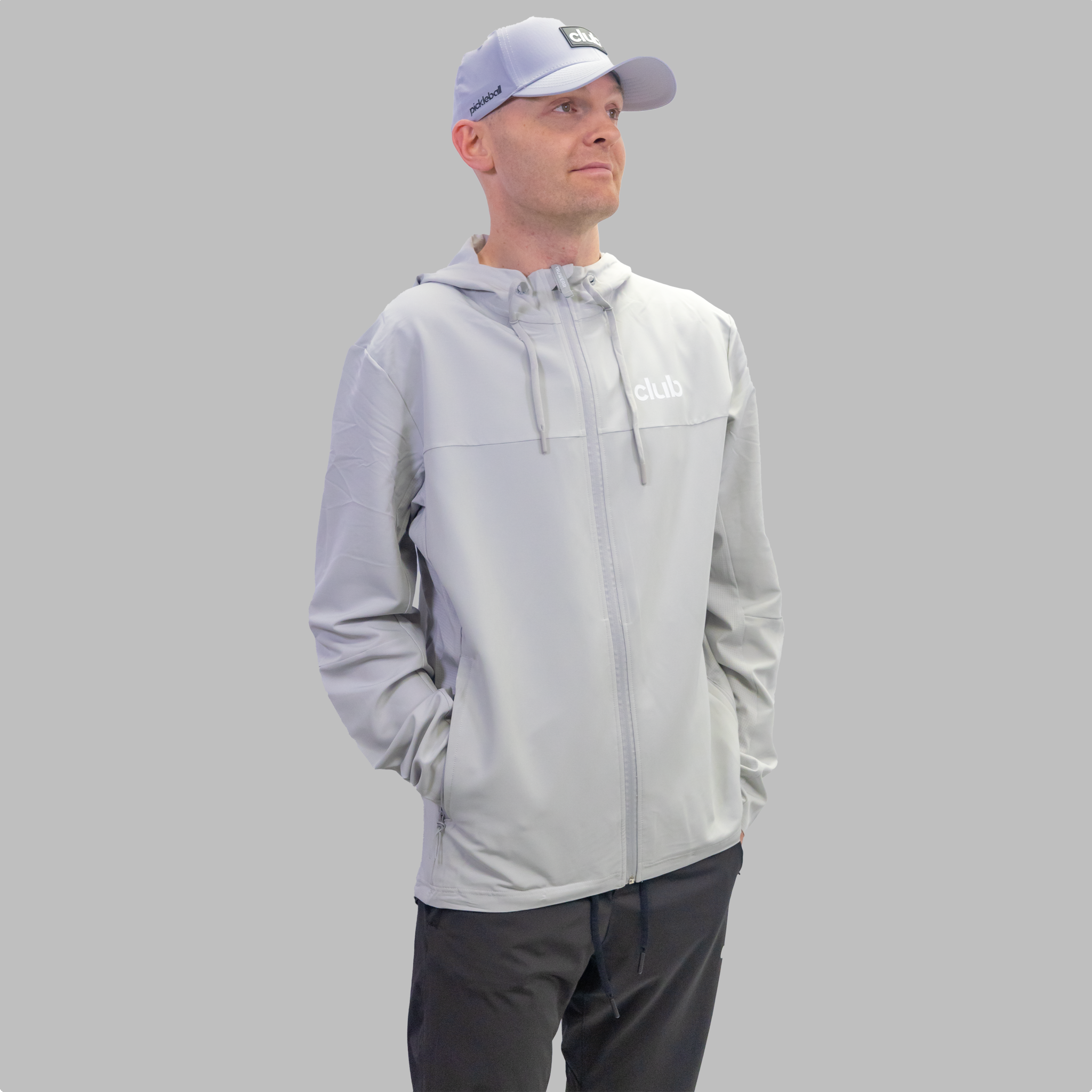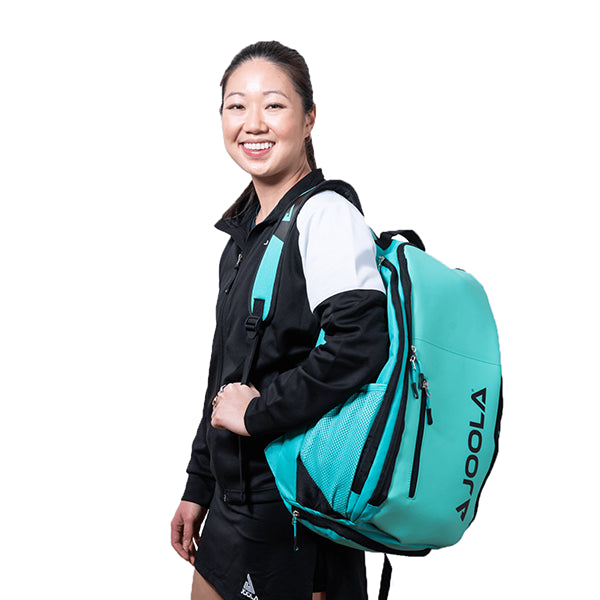Choosing Your Perfect Paddle

Ultimately, all paddles provide some level of power and control, and our paddle guide can assist you in finding the ideal balance for your style of play. With so many paddles available, choosing the right one can be a daunting task. Your play style will ultimately dictate the type of paddle that will work best for you. If you already have plenty of power, you might choose a soft- playing paddle that provides better control. Or you may opt for a paddle that amplifies your power. If you're a player who prioritizes control, you may seek a paddle that can hit hard and help you finish off a point. We're here to help you choose the best paddle for your game. Let's get started!

Choose Power or Control
When it comes to choosing your perfect pickleball paddle (say that 3 times fast), there's a wide range of materials and technologies with the aim of enhancing either power or control. Here are the main factors to consider when choosing your paddle:
- Paddle Face material type, finish/texture.
- Paddle Shape elongated, rounded, or wider shape.
- Paddle Core material type, thickness and density.
- Paddle Weight most paddles have different weight ranges.
- Paddle Handle both length and circumference.

SHAPE
The playability of a paddle is influenced by its shape in many ways, particularly the size, placement, and shape of the sweet spot.
To ensure compliance with USA Pickleball regulations, a maximum size of 24 inches (60.96cm) including any edge, guard, and butt cap, and a maximum length of 17 inches (43.18cm) without any restriction on thickness. Almost all manufacturers adhere to these specifications.
Generally, a paddle that is longer and narrower will have a higher sweet spot on its face. A higher sweet spot means it's farther from the hand creating greater leverage, which leads to increased power. A wider or rounded shape increases the paddle face area, which contributes to a larger and more consistent sweet spot.
CORE

Weight
The weight of a paddle has a significant impact on both power and control. A heavier paddle generally delivers more power, while a lighter paddle enables quicker positioning for the next shot, resulting in improved shot control.
Paddles weigh between 7 - 8.5 ounces. Typically paddles in the 7-7.6 oz range in considered lightweight, 7.6-8.2 oz is considered middleweight, and anything greater than 8.2 oz is considered heavyweight.
Consider your play style, and body type when choosing the weight of your paddle. In order to get your paddle the exact weight that's optimal for you. A common practice is adding lead tape to the edge guard. This way you can get the perfect weight for you style of play.
Face Material

The material used for the face of a pickleball paddle plays a crucial role in determining the paddle's power and control characteristics.
It also dictates how much energy is absorbed or returned to the ball upon contact. As the face is the largest part of the paddle and makes direct contact with the ball, it significantly impacts the paddle's performance. The main materials being used for the surface of the paddle:
Carbon Fiber & Graphite
Carbon Fiber & Graphite are more stiff and durable materials. They absorb more energy allowing the ball to dwell on the face slightly longer, which provides a feeling of greater control over your shot placement. These materials are known for having better feel than fiberglass, but a little less power.
Fiberglass & Composite
Fiberglass & Composite offer the most power. It's not as stiff as carbon fiber and graphite which produces a trampoline effect that returns more energy to the ball. Which translates to more power behind your strikes. With this material it typically has a smaller sweet spot compared to carbon fiber and graphite.
Handle

The length of the handle plays a crucial role in determining the location of the sweet spot on the paddle face and how far it is from your hand. A longer handle positions the sweet spot higher on the paddle face. This results in increased paddle head speed when the ball contacts the sweet spot, leading to more power. Conversely, a shorter handle moves the sweet spot closer to your hand and can offer a larger surface area. This, in turn, increases the size of the sweet spot and improves paddle performance consistency across the face, resulting in better control.
Summary
When choosing the perfect paddle for your game. There is no right or wrong answers. The best way is to try out different paddles. Ask other pickleball players what they're using. Think about the strengths and weaknesses of your own game. Then focus on the core materials and thickness, the face material, the shape and weight of the paddle, and the handle length to determine which paddle is best for your style of play!



